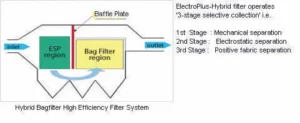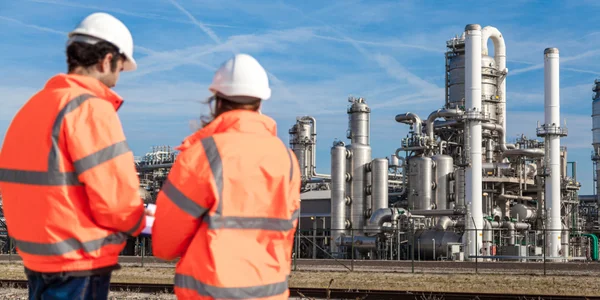Bộ lọc lai
- Máy lọc tĩnh điện
- Nhà túi khí ngược
- Bộ lọc vải
- Bộ lọc điện lai
- Khử lưu huỳnh khí thải
- Máy làm mát cưỡng bức
- Máy chà sàn
- Nhà máy làm sạch khí
- Lốc xoáy
- Đa nhân bản
- Hệ thống khử mùi VOC +
- Hệ thống hút bụi
- Hệ thống hút khói
- Thiết bị chống cháy nổ
- Quạt và máy thổi
- Xử lý nước thải
- Bộ trao đổi nhiệt không khí sang không khí
Văn phòng
TRỤ SỞ CHÍNH

Đức
-
Bộ lọc chuyên sâu Himenviro Technologies GmbH
Neustraße 45 - 49, 42553, Velbert, Deutschland/Đức - +49 20534200990
VĂN PHÒNG KHU VỰC

Anh quốc
-
Bộ lọc chuyên sâu Himenviro UK Limited
47, Bath Street WS13BX, Wallsall West Midlands, Vương quốc Anh - +44 1922 628893
VĂN PHÒNG KHU VỰC

Các Tiểu Vương Quốc Ả Rập Thống Nhất
-
Bộ lọc chuyên sâu Himenviro Technologies FZE – LLC
Trung tâm thương mại, Khu thương mại tự do Sharjah Publishing City, Sharjah, UAE - +971-556074697
VĂN PHÒNG KHU VỰC

Ấn Độ
-
Intensiv-Filter Himenviro Private Limited
D-247/11, Khu vực 63, Noida - 201301, Uttar Pradesh, Ấn Độ - +91-120-4642-500
VĂN PHÒNG KHU VỰC




Ấn Độ
-
Intensiv-Filter Himenviro Private Limited
D-247/11, Khu vực 63, Noida - 201301, Uttar Pradesh, Ấn Độ - +91-120-4642-500
VĂN PHÒNG KHU VỰC




Ấn Độ
-
Intensiv-Filter Himenviro Private Limited
D-247/11, Khu vực 63, Noida - 201301, Uttar Pradesh, Ấn Độ - +91-120-4642-500
Bộ lọc điện lai
Công nghệ 'Electro-Plus-Hybrid Filter' của chúng tôi là một giải pháp cung cấp, sử dụng hệ thống lọc sử dụng tĩnh điện trên các hạt vật chất, để có hiệu suất thu gom cao hơn với độ giảm áp suất thấp hơn. Nó giải quyết vấn đề tăng độ giảm áp suất thường thấy do tắc nghẽn túi do thấm các hạt bụi mịn, trong trường hợp của Hệ thống lọc túi thông thường, giúp tăng đáng kể tuổi thọ của túi. Bộ lọc lai là hệ thống lọc phức hợp hiệu suất cao và hiệu quả cao trong đó các hạt bụi từ Lớp cấu trúc Dendrite trên bề mặt túi ngăn chặn sự xâm nhập của các hạt vi mô và làm giảm trạng thái mù của các túi lọc, do đó nâng cao hiệu quả lọc của hệ thống lai. Bộ lọc lai là hệ thống lọc phức hợp hiệu suất cao và hiệu quả cao trong đó các hạt bụi từ Lớp cấu trúc Dendrite trên bề mặt túi ngăn chặn sự xâm nhập của các hạt vi mô và làm giảm trạng thái mù của các túi lọc, do đó nâng cao hiệu quả lọc của hệ thống lai.
Ứng dụng






Quá trình
Dịch vụ của chúng tôi
Nghiên cứu tình huống
Những câu hỏi thường gặp
1. What is a hybrid filter?
A hybrid filter is a device that cleans dirty air by combining two methods: electrostatic precipitation and fabric filtration. First, it uses electrical charges to capture large dust particles. Then, it uses fabric filters to catch smaller particles, making the air cleaner and safer to breathe.
2. How does a hybrid filter work?
A hybrid filter works in two steps. First, the electrostatic section charges and captures large dust particles from the air. Next, the air passes through fabric filters that trap the remaining fine particles. This two-step process ensures efficient removal of dust and pollutants from the air.
3. Why are hybrid filters used in industries?
Industries use hybrid filters to keep the air clean by removing dust and harmful particles produced during manufacturing. This helps protect workers’ health, reduces environmental pollution, and ensures compliance with air quality regulations.
4. What are the benefits of using a hybrid filter?
Hybrid filters offer several benefits:
- Hiệu quả cao: They effectively remove both large and small particles from the air.
- Energy Savings: The combination of technologies reduces energy consumption compared to using separate systems.
- Hiệu quả về mặt chi phí: They often require less maintenance and have longer lifespans, saving money over time.
5. In which industries are hybrid filters commonly used?
Hybrid filters are commonly used in industries such as:
- Sản xuất xi măng: To control dust emissions.
- Power Plants: To remove fly ash from flue gases.
- Steel Manufacturing: To capture metallic dust particles.
- Chemical Processing: To filter out hazardous airborne particles.
6. How does a hybrid filter compare to traditional filters?
Unlike traditional filters that use only one method, hybrid filters combine electrostatic and fabric filtration techniques. This combination allows them to capture a wider range of particle sizes more efficiently, leading to cleaner air and improved performance in industrial applications.
7. What maintenance is required for hybrid filters?
Maintaining a hybrid filter involves regular inspections to check for wear and tear, cleaning or replacing fabric filter bags as needed, and ensuring the electrostatic components are functioning properly. Following the manufacturer’s maintenance guidelines helps keep the system effective and extends its lifespan.
8. Can existing filtration systems be upgraded to hybrid filters?
Yes, many existing filtration systems, especially electrostatic precipitators, can be upgraded to hybrid filters. This upgrade enhances filtration efficiency without the need for completely new installations, making it a cost-effective solution for industries aiming to improve air quality.
9. Are hybrid filters environmentally friendly?
Hybrid filters are environmentally friendly because they effectively reduce the emission of harmful particles into the atmosphere. By capturing a broad range of pollutants, they help industries meet environmental regulations and contribute to cleaner air.
10. How do hybrid filters contribute to energy efficiency?
Hybrid filters contribute to energy efficiency by combining two filtration methods that work together to reduce the overall energy required for air cleaning. The initial electrostatic stage captures large particles with minimal energy, reducing the load on the subsequent fabric filter stage, which in turn operates more efficiently.








